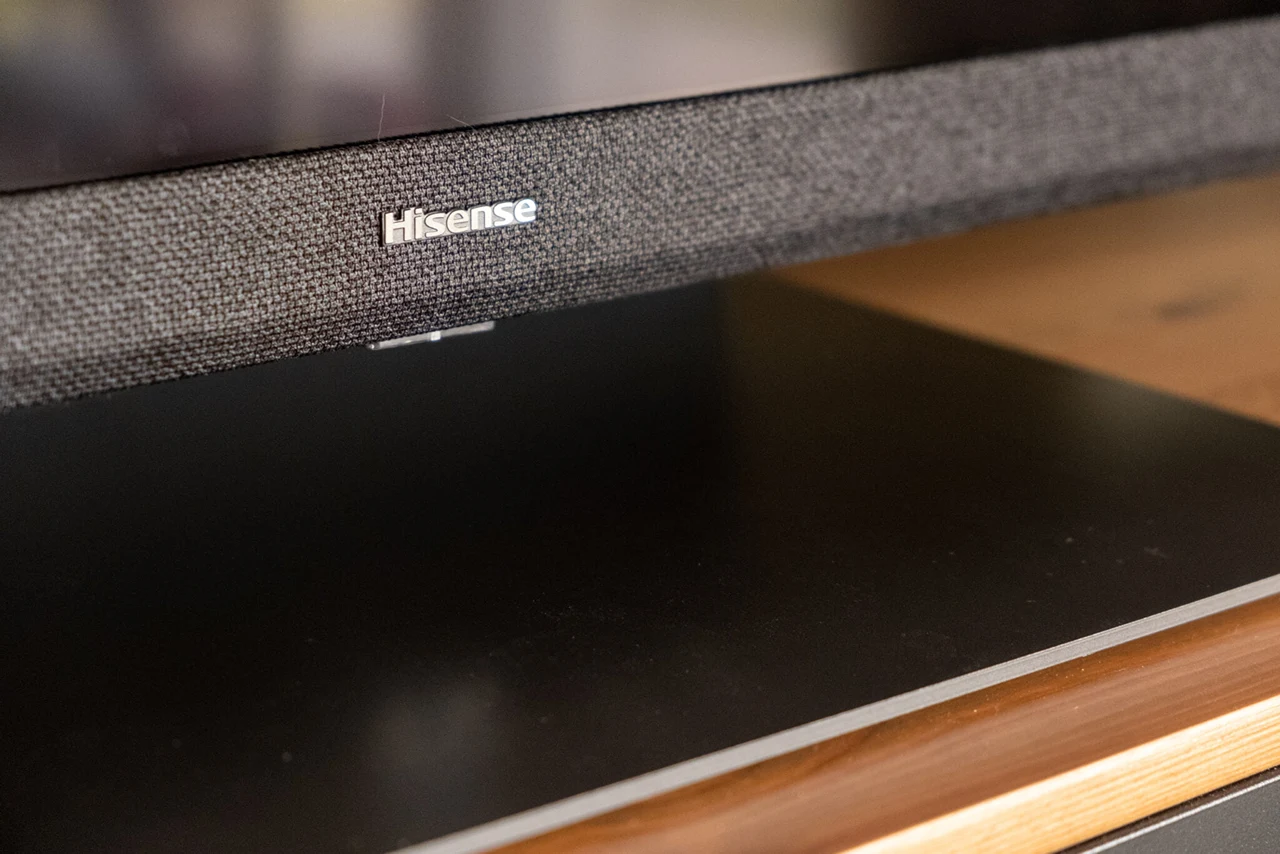Hisense U8HQ review
- Image quality
- Sound quality
- Production quality
- Remote
- Operating system and smooth operation
Hisense U8HQ review in three sentences
Hisense U8HQ is a great and very versatile TV. It provides incredibly smooth operation, as well as very good picture and sound. The whole thing is closed with a great TV set, but also, unfortunately, an average remote control.
You can look for and search for TVs with good sound. The Hisense U8HQ review shows, however, that one can be found, and the sound is not the only advantage of this model, the technologies of which significantly exceed the price threshold at which it is located. Is it clear? Is it suitable for games? Does it have a good sound? These are just three of the many questions I answer in this review.
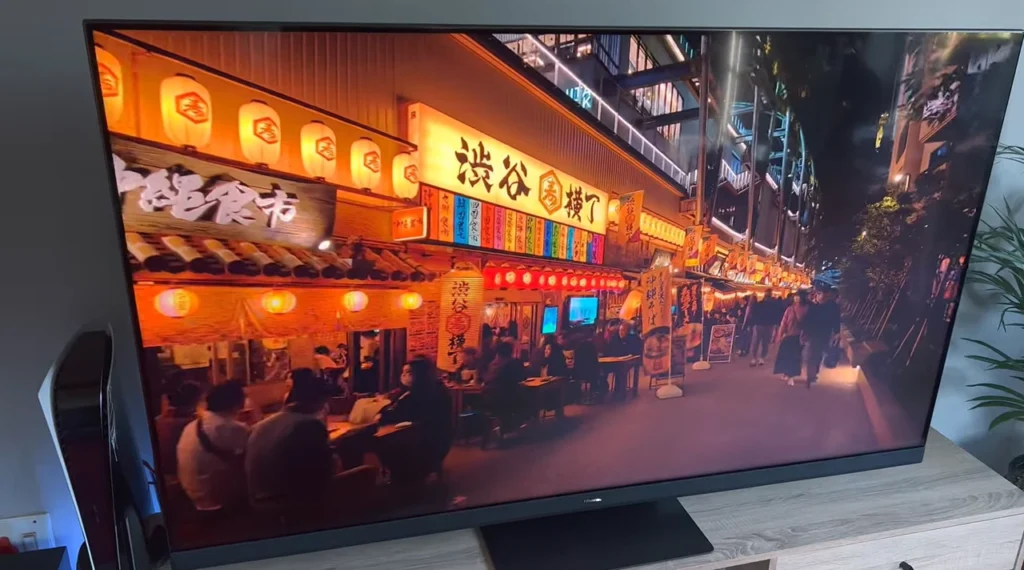
Benefits
- Image quality
- Maximum brightness
- Sound quality
- Production quality
- The fluidity and speed of the operating system
Disadvantages
- Average pilot
- Many applications are missing
- Unused MiniLED technology
Contents
Set and price
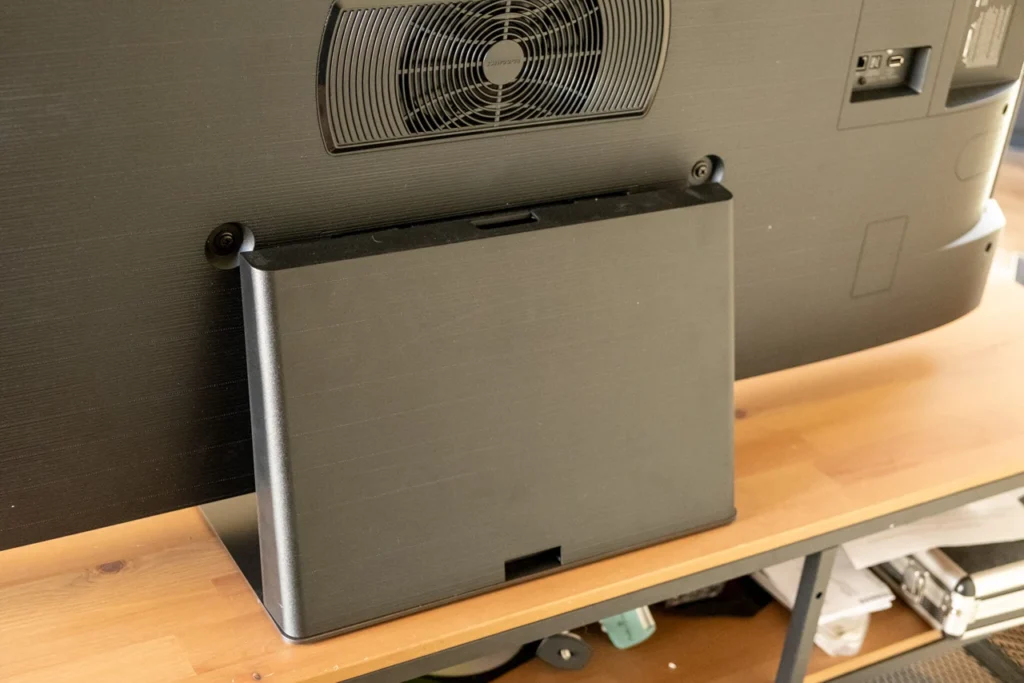
Hisense U8HQ comes to us in a large cardboard box with a lot of graphics on the front. Taking out the TV is very nice, despite its heavy weight, thanks to the removable top of the carton. To start, cut the upper part, remove the remote control, base elements and paperwork, then remove the black locks and remove the entire upper part. Thanks to this process, we do not have to remove the TV almost one meter up, but only about 30-40 centimeters. This greatly reduces the chances of damaging the TV.
The Hisense U8HQ is available in two sizes. The Hisense 55U8HQ costs USD $999.99 , the Hisense 65U8HQ costs USD $1,400.00 , and the Hisense 75U8HQ costs USD $1,899.99. So the difference between the sizes is quite big.
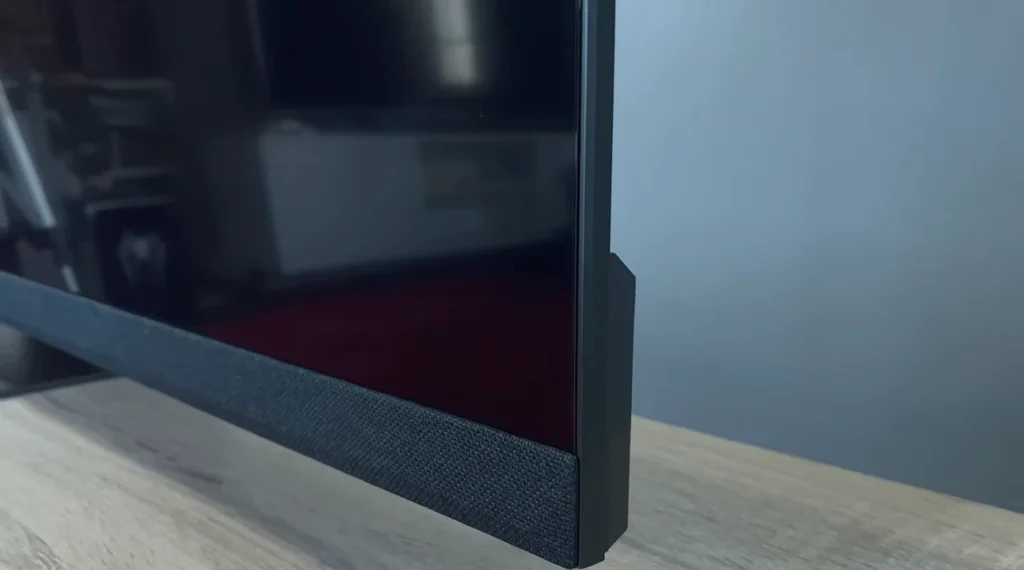
Specification
- Diagonal 55 and 65 inches
- QLED technology
- MiniLED technology
- Resolution 3840 x 2160 pixels
- 112 local blanking zones in the 55 “model and 160 zones in the 65” model
- Matrix refreshing 120 Hz
- Five speakers with a total power of 70 W
- Built-in subwoofer
- Wi-Fi support 6
- HDMI 2.1 with ALLM, VRR
- Support for Dolby Vision, HDR10 +, Dolby Atmos, DTS, HDR10, HLG
- Brightness in a peak of 1300 nits
- VIDAA 5.0 system
Build quality and build
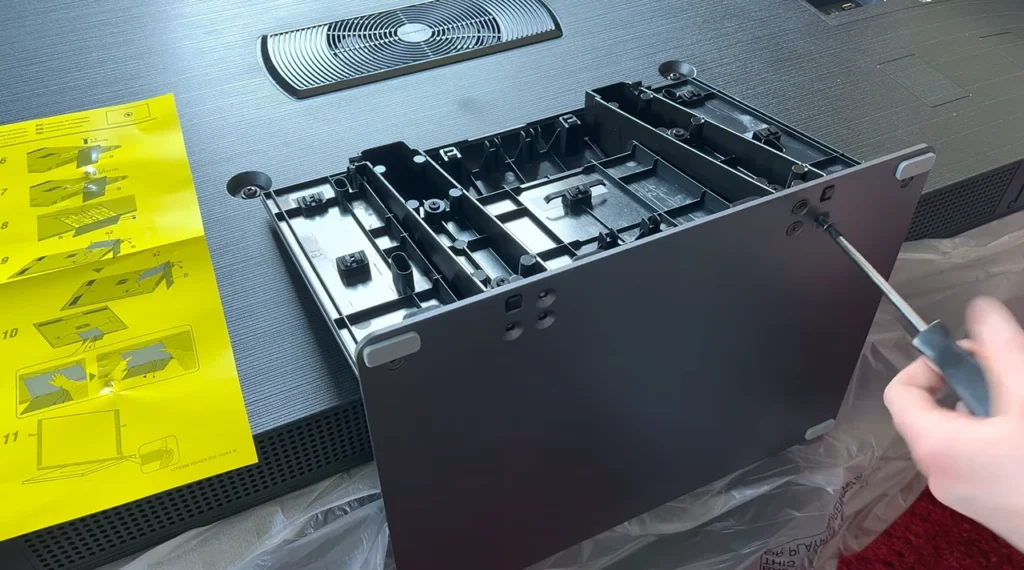
The Hisense U8HQ is a well-made TV set. The first thing that imposes itself on us is the weight, because the reviewed screen weighs 19.5 kilograms without the base . With it, we reach almost five kilograms. The entire back is made of plastic, but this is a different material to the recently reviewed Hisense U7HQ.
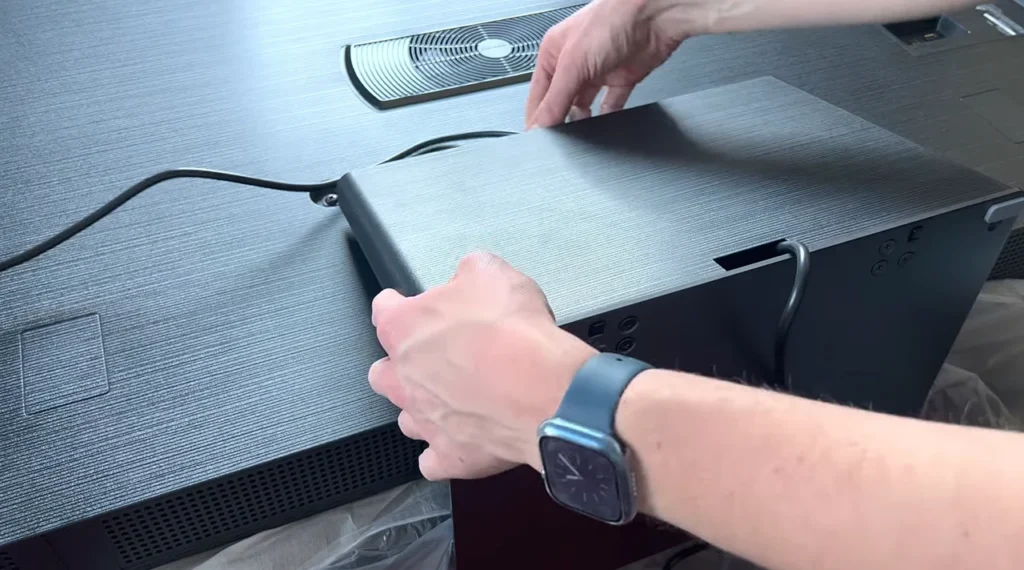
This time we are dealing with a material with horizontal stripes. There is a hole for the subwoofer speaker in the center of the rear panel. When viewed from the front, almost all the connectors are on the left and the power socket on the right. The TV is also not the thinnest one, without a stand its thickness is 7.7 centimeters. When hung on the wall, it will look good, but it will not be a craze and our biggest dream.
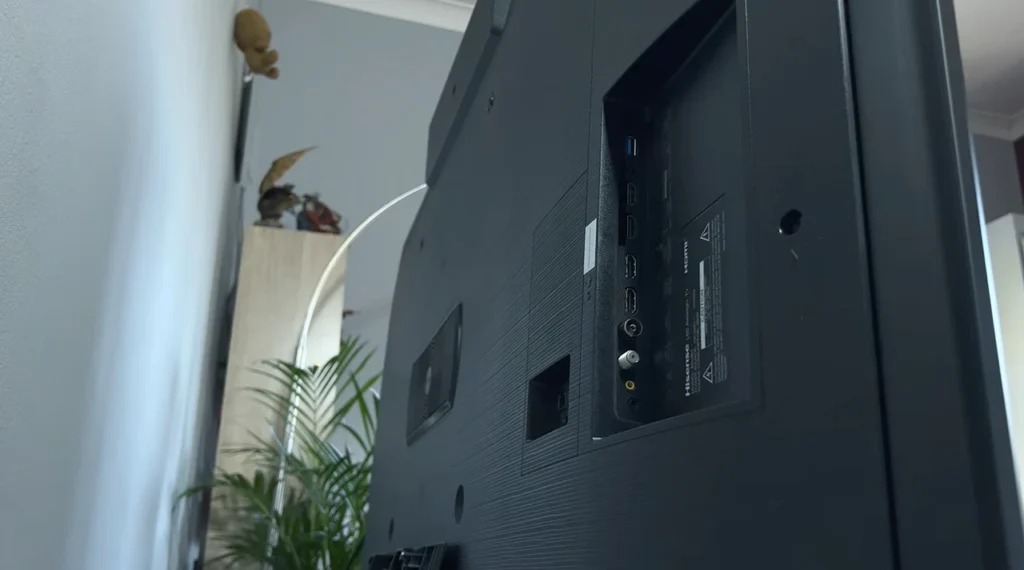
From the front, the TV looks quite unusual. This is due to the built-in sound bar which is covered with gray material. The TV has a very thin, silver frame. Personally, I would prefer the titanium color or even black. It looks better when it is bright, because the frame does not reflect that much light. The large, single stand located in the center of the TV also gives an elegant look. Its assembly is relatively simple, but it consists of as many as three elements, one of which is the cover, where we can hide the cables.
Remote
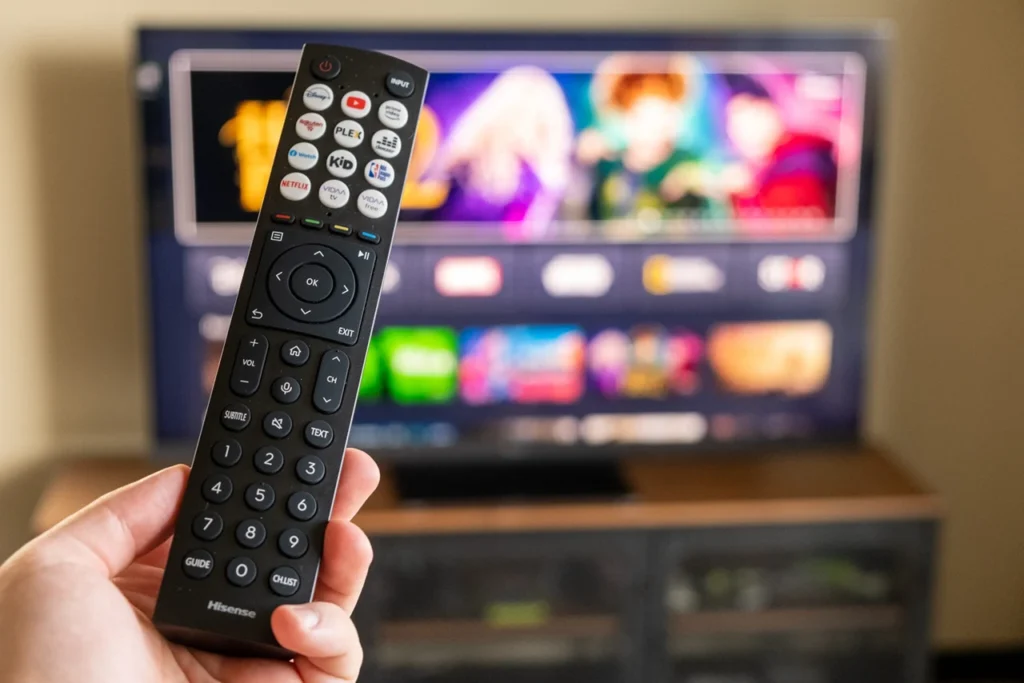
The reviewed Hisense U8HQ is equipped with the same remote control as the lower model, the Hisense U7HQ . Personally, I think that we could see the controller that was included in the set with last year’s flagship, the Hisense A9G . Unfortunately, it is as it is, and we have a fully plastic remote control at our disposal.
Of course, it works with the help of infrared, and on it we find as many as twelve buttons that direct us directly to various applications. Only four of them will be useful, which is a standard amount. However, it is poorly balanced. The lower part of the remote control is the thickest, and as a streaming fan I used almost only the upper half of the buttons. The keys themselves are comfortable, made of rubber and have a matte finish.
VIDAA 5.0
Hisense has been using its own operating system for a long time. It is still one of the best performing systems in televisions. I was delighted with the smoothness and speed of the system. All apps work flawlessly and their loading times are blazingly fast. I have never had problems with switching from YouTube to Disney + or Amazon Prime.

Everything works immediately, without the need to reload the application. Sometimes, when using a particular service for a very long time and trying to return to the previous one, it had to overload, but eventually we returned to the stage just before watching the movie, where you only need to click one button on the remote control.
Easy access to settings is also a very serious plus. The TV does not inform us every now and then that a given function will increase energy consumption. The biggest downside is the small amount of apps available. We will launch Netflix, Polsat Box, Prime Video or Disney + on the TV, but there are still no music applications (only Deezer is present), TVP VOD, Player +, HBO Max or Canal +. The latter is expected to be available soon, but unfortunately we do not have the exact date of its introduction to the store.
The image quality is at a very high level
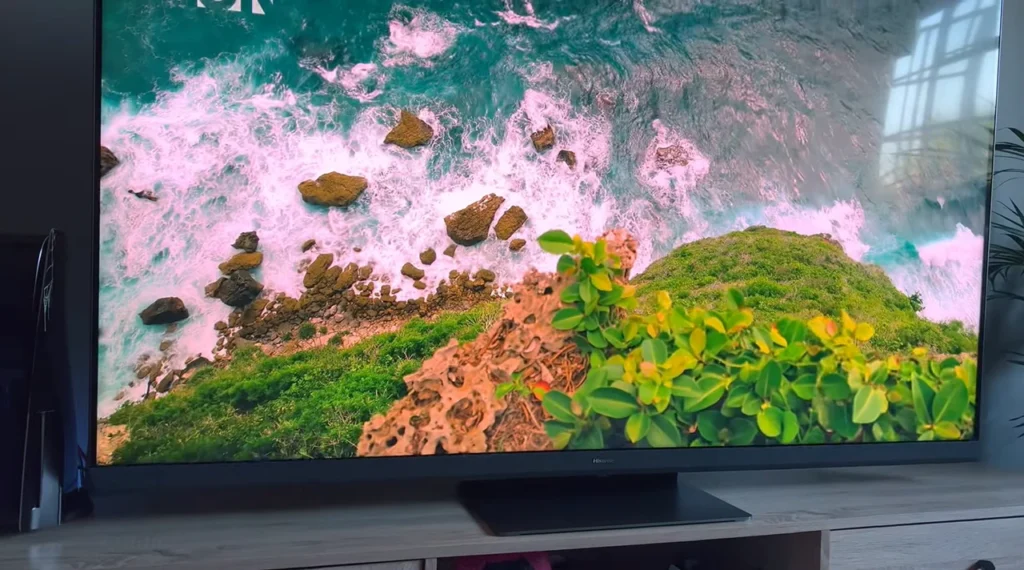
The Hisense U8HQ offers almost the highest image quality within its budget. MiniLED is one of the most forward-looking technologies in televisions. However, I’m not sure why Hisense decided not to use her full potential. The reviewed model is 55 inches, which results in 112 zones of local illumination. The larger model already has 160 of them .
This means that the models from 2020 and 2021 have almost the same number, and they were based on standard LED backlight. MiniLED diodes are definitely smaller, which should result in a much larger number of local blanking points. Nevertheless, the quality is still at a very high level. The manufacturer could simply get more out of the technology used, but chose not to do so.

Image tonality and colors could be slightly better. It is not a matter of color palette coverage, because the reviewed Hisense U8HQ covers over 95% of the DCI-P3 space, which is a very good result. Gamma is slightly too high in the Night Cinema mode which is closest to the perfect score, it is 2.3 instead of 2.2. Of course, this is not a big difference, but the starting image is therefore slightly too dark.
The average DeltaE error in the reviewed model was 2.8, which is a very good result because, according to various sources, an error below 2 or 3 is invisible to the human eye. The mean grayscale error was 3.1, which ultimately indicated a slightly reddened image. These are by no means reprehensible mistakes, because the deviations are still small.
Hisense U8HQ works great both in high-budget films such as Blade Runner or Star Wars, but also in budget productions, such as simple crime series, Sky Disasters and many others. Every time the picture quality is very good and the minimal tonality problem due to the gamma shifted is invisible until you are dealing with very dark scenes. In the case of the 2014 movie “Godzilla”, it is one of the films where there are many such moments. I have had slight problems with seeing shadow detail at times, but this is really a marginal problem.
In brighter productions I had no problems with the amount of details in the lights. The clouds in the sky were perfectly outlined, and all reflections were very clear. Thanks to the good contrast (although not yet perfect), the TV also handled a variety of scenes very well. City shots, where everything is happening in one frame, look very good. However, you can see the delicate glow of the blanking zones in the star shots in Star Wars, or even in the space scene in the WALL-E animation.
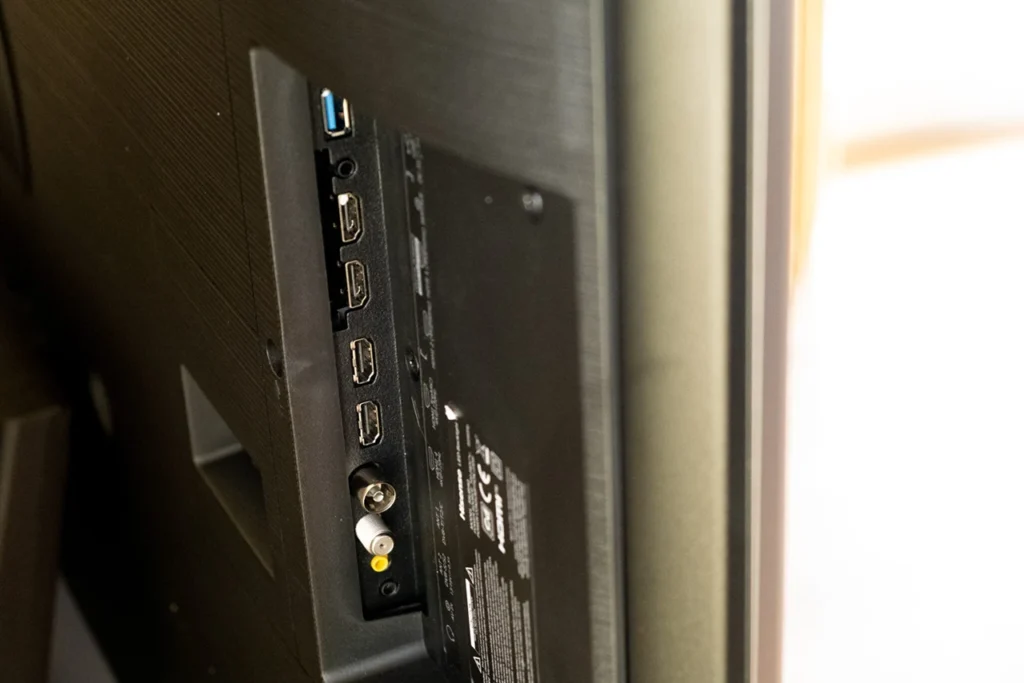
The Hisense U8HQ is also a bright enough TV that it can easily cope with a sunny living room. This is not yet the level of the more expensive Samsung QN90B , which even reached 2,000 nits, but the achievable 1,450 nits in HDR can definitely make a very good impression. In the case of SDR materials, the brightness is less than 600 nits, which is also a delightful result and allows you to watch TV without worrying that solar reflections will be very disturbing. If the sun is shining directly at the screen, it can be a bit problematic in the long run.
The HDR effect on the reviewed Hisense U8HQ TV is generally very visible. 1450 peak rivets in materials where HDR has been used, it definitely does a great job. The whole thing looks natural and clear at the same time, without any exaggeration. The HDR Night mode is slightly better calibrated at the factory than the modes for SDR , thanks to which both the gamma and colors are closer to the prescribed standards. The contrast also looks very decent, although the zones still don’t dim as much as they could. If the image looks too faint for you, the available “Dynamic Contrast” feature should improve your viewing experience. I had it turned on myself, but rather at the lowest of the three available levels.
Hisense U8HQ in games and sports
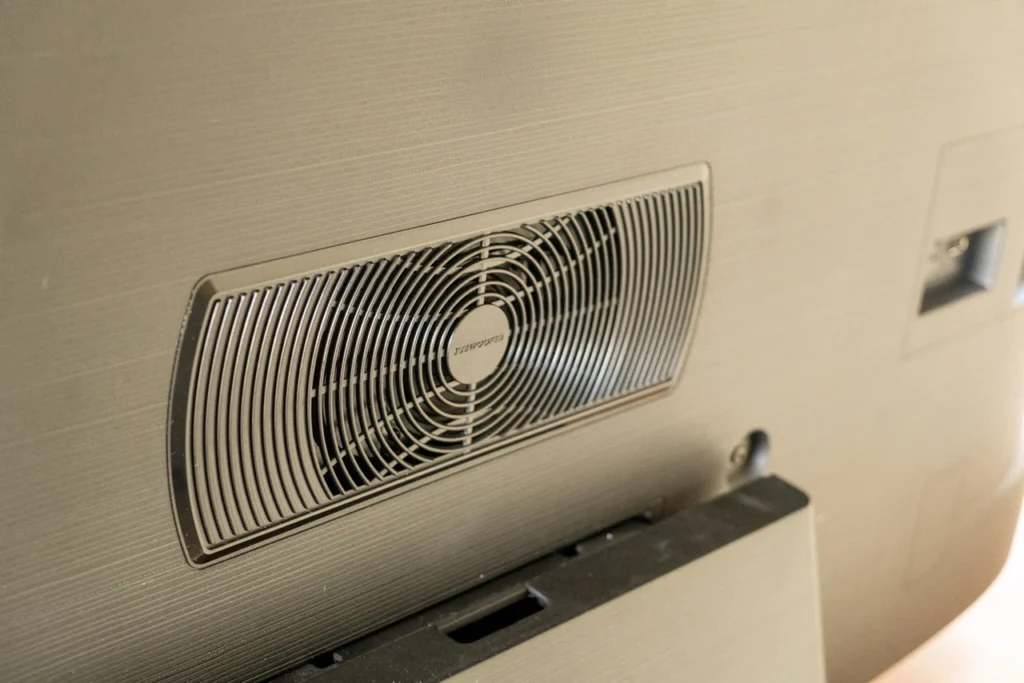
The reviewed TV is equipped with two full HDMI 2.1 connectors that support 4K 120 Hz signal. The movement of the game looks really natural and the image is completely fluid. It may not be the same stage of naturalness of the image as in the case of the Hisense A9G , but for an LCD TV it can be enchanted.
In the case of sports, I decided to watch this year’s F1 Singapore, where rainy conditions made life difficult not only for drivers, but also for the devices on which we watch the fight for the title. And despite these problems, Hisense U8HQ handled the whole thing in a very good style. Plumes from the water, large contrasts and fast cars are not a challenge for the reviewed TV set. They looked natural, without too much blur and
Sound quality which I expected more, but I was not disappointed anyway
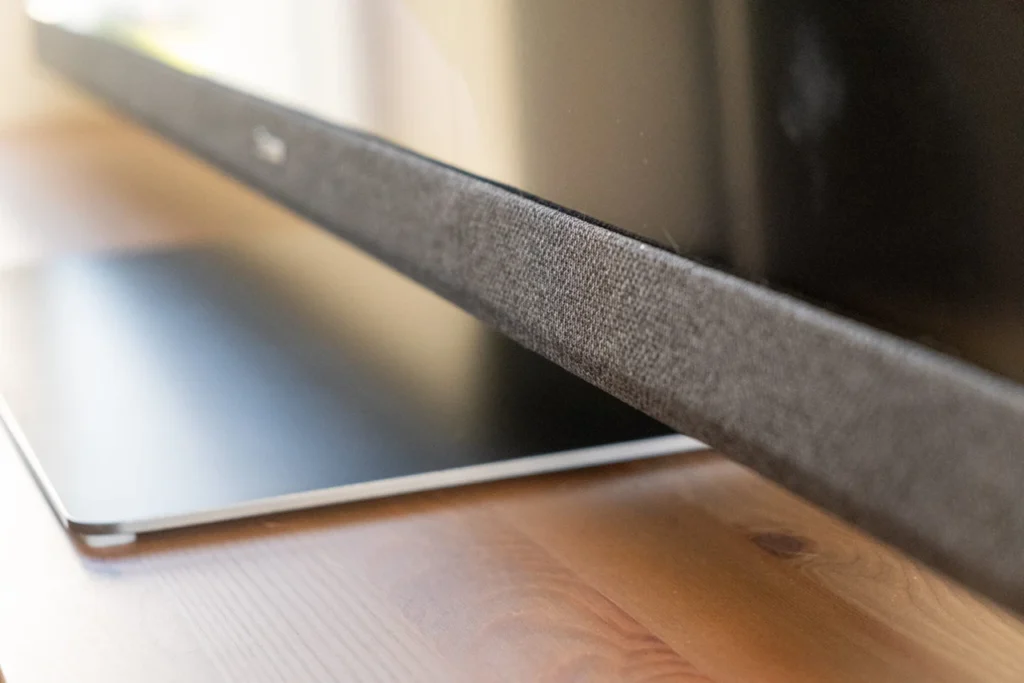
The Hisense U8HQ is another Hisense flagship TV that has a built-in sound bar. The manufacturer has included five speakers with a total power of seventy watts in the structure . Two of them are located in the lower part, which is hidden behind a gray masking frame. Two more, with a power of five watts, are on the back, at the top of the TV. In the center of the rear cover is a twenty-watt subwoofer. And if it wasn’t advertised as a subwoofer, I wouldn’t have the slightest problem with the sound quality. I expected a bit more bass , obviously not at the level of dedicated subwoofers like the Sonos Sub Mini , but just a bit more.
If we omit this element, it is just very good. The sound is very clear, dynamic and colorful. Dialogues are fully understandable, even those that are average recorded. The same applies to background effects, you do not feel that they are TV speakers. I personally felt it was an inexpensive soundbar. In the case of the reviewed Hisense U8HQ, it makes no sense to buy inexpensive sets like Teufel Cinebar 11 2.1 or Sonos Ray . Personally, I would hit a higher price range like the Samsung HW-Q990B . Then the difference is noticeable enough.
Hisense U8HQ review – summary
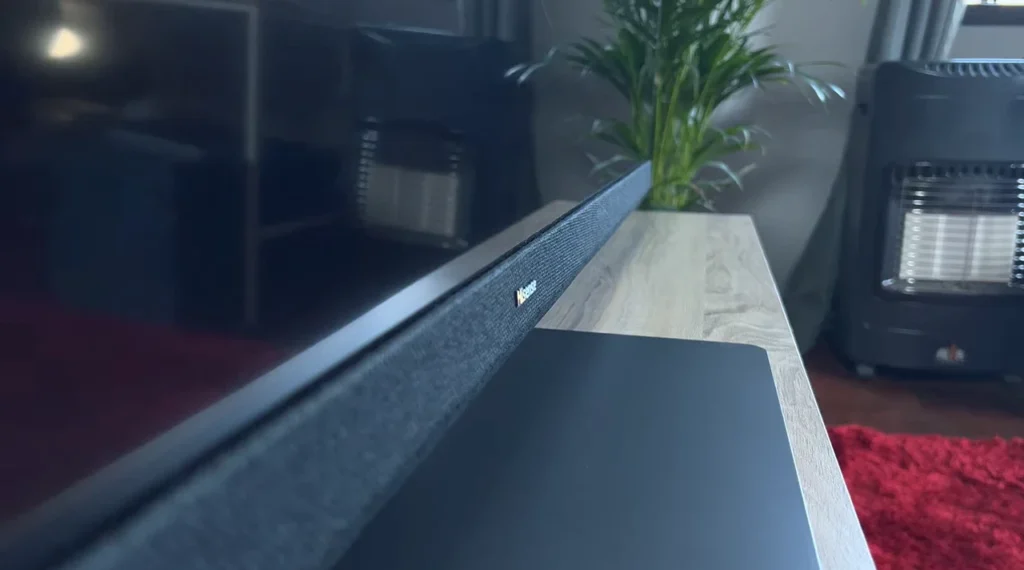
The reviewed TV set is a flagship placed at a mid-range price. There is almost nothing about it that I can fault, except for the fact that the manufacturer did not fully use the MiniLED technology used . The number of zones has not increased compared to the 2020 and 2021 models. Hisense improved the brightness and image processing, which is visible. The quality of the films and series displayed is also at the highest level. The TV supports all HDR formats, and offers great sound thanks to the built-in soundbar and high-quality speakers placed throughout the TV.
Add to this, of course, great workmanship, very elegant design, thin frames, and the stability of the structure. The element that works great is also VIDAA, i.e. the proprietary operating system. Its downside is, unfortunately, a relatively small number of applications, but the manufacturer constantly invests and adds new applications. The last point I didn’t like is the remote which is just poorly balanced for me as a streaming user.

